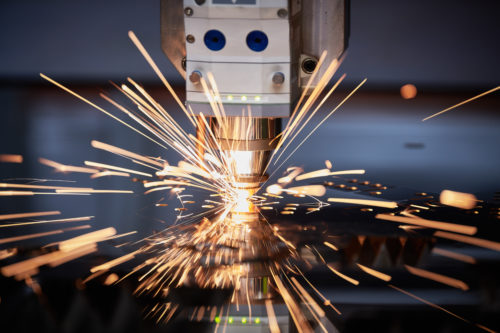Menu
Metal laser cutting is a stable, reliable, and accurate fabrication process. By focusing a concentrated beam of high-powered energy through an aperture, laser cutting literally slices through the material by melting, vaporizing, and ablating it to the point of ignition. Through CNC programming, cutting efficiency is achieved more by the speed of the laser beam than the raw power generated from it. When cutting, the residual molten material is blown out of the way by the high-density airflow from the beam. The result is a clean cut, with maximized precision, smooth edges, and exceptionally tight tolerances.

There are several common issues with metal laser cutting that operators should be aware of in order to avoid them. The process is an environmentally friendly one that offers little risk to the operator, but if it is not operated as directed it can cause damage to the material or even personal injury. Operators should never leave the machine while it is working. The metal should be free of flammable lubricants or oils, and just as important, no flammable or explosive material should be in the area of the laser cutting machine.
Equipment Complications
Even though laser cutting produces precision cutting, there are factors that should be addressed to ensure the accuracy of the cut. Problems could arise due to the equipment such as table vibration, auxiliary gas, power output, or as a result of the physical and chemical properties of material itself. Material quality and the number of elements that comprise the metal can impact the accuracy of the cut, and different elements have different reactions and melting points which can affect the quality of the cut. Because laser cutting is a sensitive process, be sure the equipment such as the table is stabilized and functioning properly, and that the metal has a consistent material composition.
Beam Accuracy
To ensure a precision cut, the focal position of the beam needs to be accurate as does the cutting speed. The focal position of laser cutting machines is of particular importance. The cutting focus position is proportional to the length of the lens. Automatic focus will significantly improve the efficiency of the laser cut and do so in a far more reduced time.
Thickness
Laser cutting applications are more difficult the thicker materials. Attempting to cut thick materials increases the chance for experiencing blowout or thermal runaway and damaging the material. For laser cuts between 20mm and 25mm, focus the beam and reduce the spot size to improve precision.
Part Geometries
Part geometries that are complicated to cut can present a challenge. Corners and smaller parts can absorb more heat if consistent cutting speeds are not maintained. When cutting speeds are altered, the cut is less accurate. To correct, when cutting intricate part geometries, speed up the laser when cutting curves and corners to avoid overheating.
Let us help your Company find the NEW Laser or USED Laser you need for your applications. Give us a call, we're here to help.
